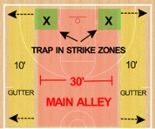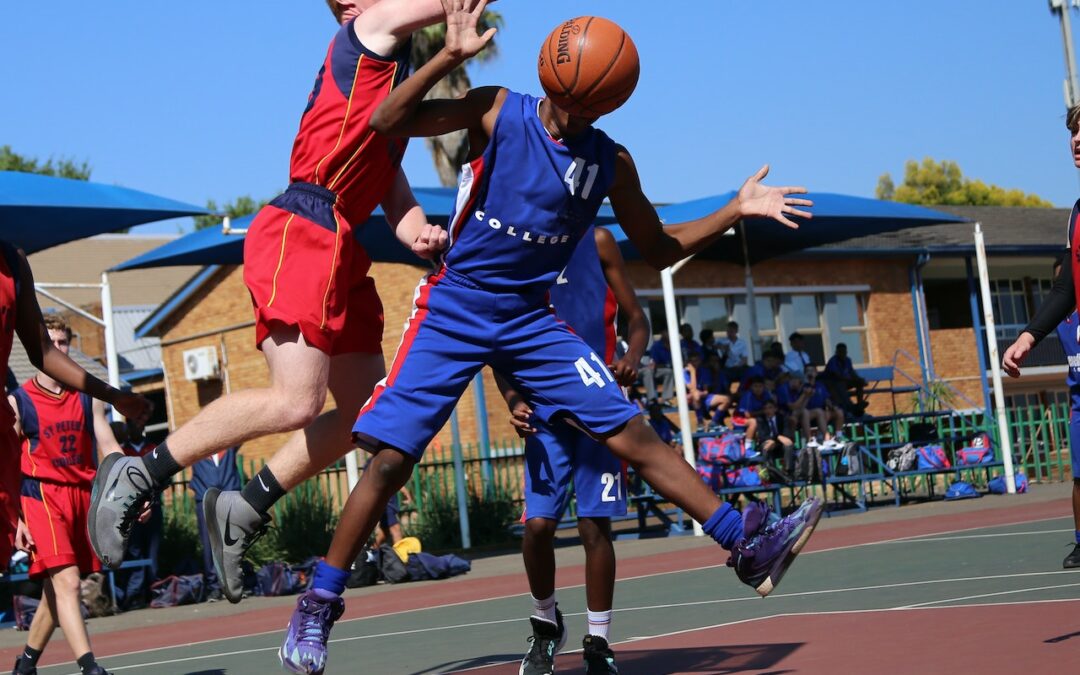Basketball coaches frequently strategize diverse methods to overcome the top-ranked team in their matchups. A significant portion of these strategies revolves around defensive tactics. For coaches aiming to optimize their training sessions and enhance the effectiveness of their guidance, the solution lies in embracing the Funnel Down Defense.
The Funnel Down Defense methodology offers coaches a proven defensive system that controls the tempo of the game and fosters the creation of turnovers.
What is the Funnel Down Defense?
The Funnel Down Defense taps into an often overlooked element of many basketball courts: the volleyball lines. This defensive strategy revolves around compacting the court’s effective area for the opposing team’s offense, achieved by pushing ball handlers beyond a specific key section of the court. The primary objective of Funnel Down Defense is to hinder the utilization of around 60 percent of the court, compelling offensive play to operate within a condensed 40 percent perimeter.
The central idea is to confine ball movement to one side of the court, inducing a faster pace in the opposing offense which, in turn, tends to result in errors and missteps. Moreover, this tactic reduces the available space that the offense can effectively utilize.
Funnel Down Defense is meticulously crafted to disrupt the customary rhythm and flow of opposing offenses, leading to turnovers and forcing unfavorable, hurried shots. Its efficacy is particularly pronounced in games with a shot clock, as the offensive team is forced to dedicate more time to escape the trapping zones.
3 Key Concepts of the Funnel Down Defense
 Pin the ball on the sideline
Pin the ball on the sideline- Funnel the ball to the baseline
- Trap and Rotate in the short corner
The design of this defense borrows its terminology from bowling. The task of the defense remains to “funnel” the ball along the “gutter” of the court to the baseline, where a trap awaits in the “strike zone.” Funnel Down seeks to keep the ball out of the “alley,” which is the main stretch of center court inside the volleyball lines. The traps occur in “strike zones” positioned at the short corners.
Ideally, defenders pressure the ball into the gutters, avoiding the centering pass. This is called a “pin.” This tactic overplays the ball handler away from the middle so that the ball can’t be swung. Defenders stay ahead of the ball handlers by sprinting, not sliding, trying to stay half a body width ahead of the dribbler. This discourages penetration and funnels the ball toward the trap areas.
The defender “up the line” covers a man below the ball level on the court. This defender needs to remain between his man and the ball in order to help. The defenders continue to “funnel” the ball along the sideline, encouraging the dribblers to head toward the baseline. Once the ball enters the “strike zone” in the short corner, that triggers a trap and weak side rotation.
For more on how to implement this game-changing defensive system, Click Below for the Limited Time Funnel Down Defense Offer!
Click Here for More about the Funnel Down Defense!
This limited time offer includes teaching sessions and video drills, PDF diagrams, practices plans, a cheat sheet, and an entire coaching community!
Related: Basketball Leadership Ideas – Lead ‘Em Up
Resources:
If you found this useful, don’t forget to check out additional blog posts at TeachHoops.com. Also, check out TeachHoops on Facebook, Twitter, Instagram and YouTube.





